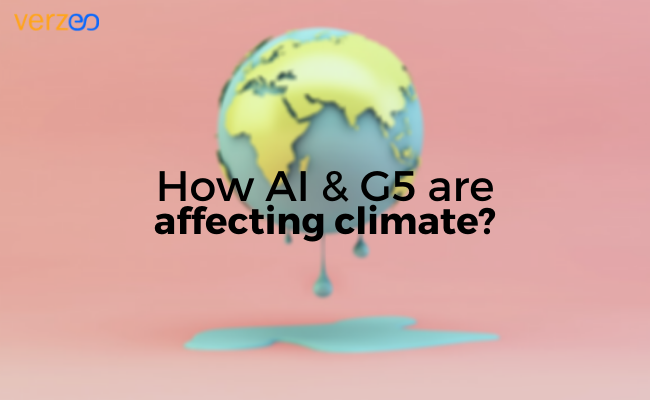The current statistics reveal that concentrated data centers around the world consume around 2% of the world’s electricity, with AI consuming around 0.1%.
AI is definitely power-hungry. Training and running complex models to carry out deep learning involves consumption of massive amounts of data, which uses more memory and in turn increases energy consumption for the processors.
These predictions highlight the uncertainty around the impact of AI on the future of large scale computing and subsequently its high energy demand. The continued growth of AI has been deemed as a hindrance by many experts including Tesla and SpaceX CEO, Elon Musk.
However, the future of AI is definitely going to bring its own advantages. There will be so much more information in the form of data due to the rise of IoT, autonomous vehicles, smart devices, etc. And the rise of the blazing-fast 5G wireless connectivity will make it even easier to transfer data to and from data centers globally.
We will speak about 5G in a while but let’s focus on what AI has to offer and how using AI we can reduce the effects of AI over the world and actually prevent harm more than actually causing it, environmentally speaking.
Recent widespread issues like the wildfires in the Amazon and in Australia have raised serious questions on the technology being such a good facilitator to human evolution and growth, why it couldn’t even predict or control such a major disaster? This serves as a good lesson for technologies such as AI to put them to much better use.
Designing a complex AI model equipped with deep learning capabilities would enable it to easily predict and suggest ways to avoid or even control its spread.
Latest developments in AI have really shown some significant traits that can help towards improving the environmental conditions.
AI comes in two forms viz. Rules-based and Learning-Based. Both have their own pros and cons. For example, a rules-based AI model will help save a lot of time in manual labor by solving and learning huge amounts of data and give solutions. But it can only do so much as it has its own restrictions and only provides solutions. It has no memory of its own and that’s why Learning-based AI was created.
Simplifying Learning-based AI with an example, when it comes towards helping to solve climate change, this type of AI could essentially do a lot more than analyzing data and providing solutions by directly interacting with the problem that it was given. It can record the analysis of these numbers, study relevant cases and provide solutions in the future when such a problem arises and also recommend the best solutions all on its own, theoretically.
Speaking about 5G technologies, recently Ki-young Choi, the newly appointed Minister for Science and ICT made a remark at the National Assembly in Seoul. He alleviated all the rumors, fears, and myths regarding 5G technology within the industry, as well as the general public.
Being an expert in AI and semiconductors, he said that the electromagnetic waves emitted while utilizing 5G technology don’t actually harm the people’s health and the well-being of the environment to the extent it was being portrayed to do.
On similar lines, UK’s digital minister Matt Warman also said that these 5G signals are no more dangerous than “Talcum powder and pickled vegetables” while adding to authoritative reports from the World Health Organization and the International Agency for Research on Cancer.
For example, 5G stations in China have a Radiation standard or less than 40 microwatts per sq. cm, much lower than the average radiation that is present in a normal home including appliances such as Hairdryers(100 microwatts per sq. cm) and Wi-Fi routers(60 microwatts per sq. cm).
The radio waves generated by this wireless technology are far less energetic than even the visible light that we experience in our day to day life, so much so that according to Olaf Swantee, CEO of Swiss Telecom operator Sunrise, 5G can actually act as a protective force for our environment.
It can help reduce carbon emissions and in turn the levels of CO2 in the atmosphere. The generation of waste will also reduce due to reduced consumption of energy. Dr. Hui Cao, Head of Strategy and Policy, Huawei EU, pointed out that 5G consumed only about 10% of the energy that the previous equivalent consumes.
Energy efficiency has become a major consideration for the future of communication networks. Using lesser amounts of energy to transfer more amounts of data has always been and will be the ultimate aim and ICT technologies can be of great help in this venture.
In conclusion, we have been in the dark in recent years about the harmful effect of such futuristic technologies but the actual picture is quite different in reality. Surely AI uses more energy but what if trained and developed models of AI are put in place which actually reduces the amount of energy that a particular model will consume in the future.
Not to forget the number of benefits that this trained model will deliver. 5G too is actually not that harmful as it is portrayed to be in the tech world.
As we come to know more facts and newer studies showing the potential benefits of these technologies our trust eventually will build upon them. According to experts, AI and 5G are contributing to climate concerns.
It can be misleading but in reality, AI and 5G are actually contributing towards solving the problem of climate change. Who knows? In the near future if we combine both of these technologies in the right way we might actually tackle climate change and make the world the green paradise it is dreamt to be.
It is not a utopian dream, but rather one that can be achieved through cohesive work and concern towards this planet and the environment that makes us live and thrive.

